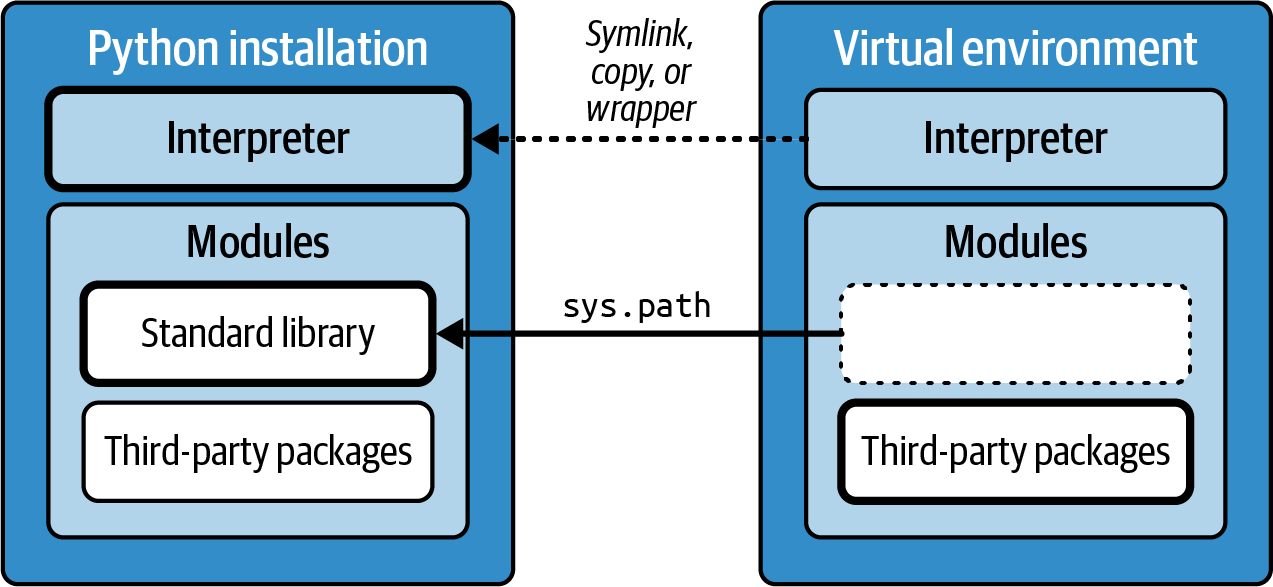Chapter 2. Python Environments
At its core, every Python installation consists of two things: an interpreter and modules. The modules, in turn, come from the standard library and from third-party packages, if you’ve installed any. Together, these provide the essential components you need to execute a Python program: a Python environment (Figure 2-1).
Python installations aren’t the only kind of Python environment. Virtual environments are stripped-down environments that share the interpreter and the standard library with a full installation. You use them to install third-party packages for a specific project or application while keeping the system-wide environment pristine.
Note
This book uses Python environment as an umbrella term that includes both system-wide installations and virtual environments. Beware that some people only use the term for project-specific environments, like virtual environments or Conda environments.

Figure 2-1. Python environments consist of an interpreter and modules. Virtual environments share the interpreter and the standard library with their parent environment.
Managing environments is a crucial aspect of Python development. You’ll want to make sure your code works on your users’ systems, particularly across the language versions you support, and possibly across major versions of an important third-party package. A Python environment can contain ...
Get Hypermodern Python Tooling now with the O’Reilly learning platform.
O’Reilly members experience books, live events, courses curated by job role, and more from O’Reilly and nearly 200 top publishers.

